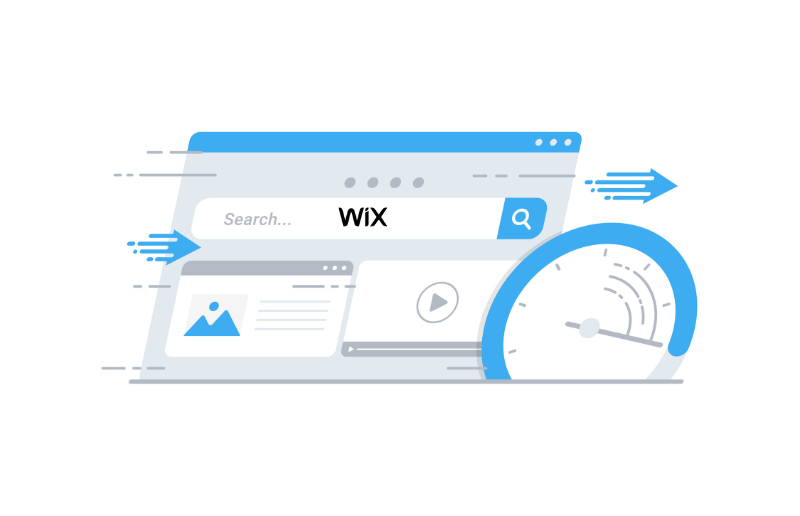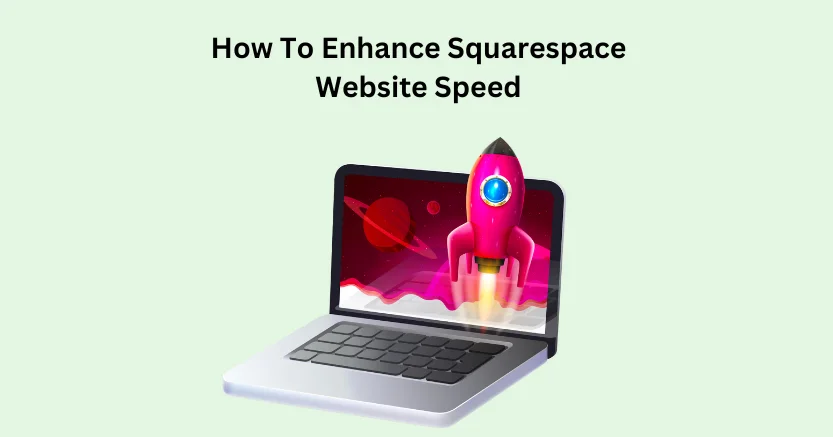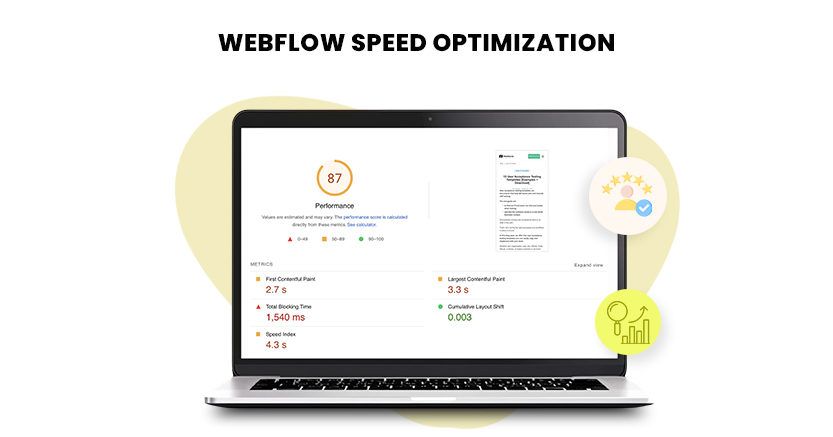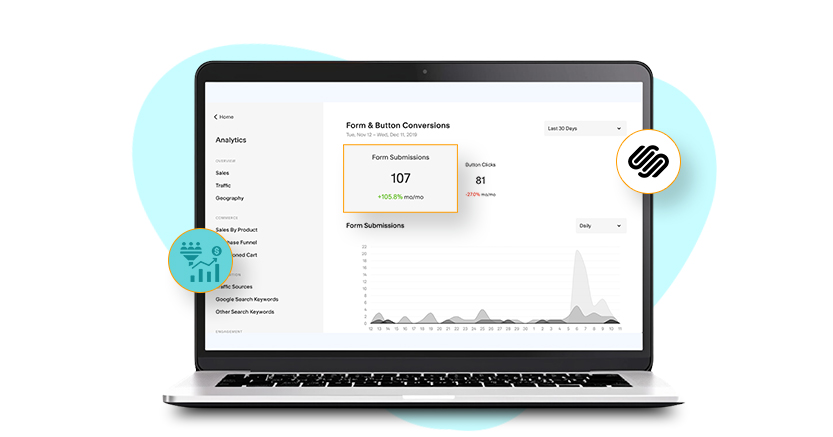1. Introduction
In today’s digital era, a website’s loading speed can make or break its success. Users demand immediate access to information, and slow-loading pages can lead to frustration and a loss of interest. This is where website speed optimization comes into play. It is the process of improving the loading speed of a website to enhance user experience and increase engagement. In this ultimate guide to optimization, we will focus on Wix websites and why website speed matters. We will delve into various techniques and tools that can help boost your Wix website speed and take it to the next level. So, buckle up and get ready to optimize your Wix website for optimal performance!
1.1 Understanding Website Speed Optimization
Website speed optimization is the process of improving the speed and performance of a website. This involves a range of tactics and techniques that are used to improve the website’s loading time. The goal of website speed optimization is to make sure that the website loads as quickly as possible, ensuring that users have a positive experience and are more likely to stay on the website.
1.2 Impact of website speed on user experience and SEO
Website speed has a significant impact on both user experience and SEO. Slow loading times can lead to frustration and annoyance for users, which can result in them leaving the website and potentially never returning. Studies have shown that a one-second delay in website loading time can lead to a 7% reduction in conversions. This means that website speed optimization can have a direct impact on your business’s bottom line.
In addition to its impact on user experience, website speed also affects SEO. Google has stated that website speed is a ranking factor in their algorithm, meaning that faster-loading websites are more likely to rank higher in search engine results pages (SERPs). This means that optimizing your website’s speed can improve its visibility and ultimately drive more traffic to your website.

Want to read this blog offline?
No worries, download the PDF version
now and enjoy your reading later…
 Download PDF
Download PDF 2. Analyzing Website Speed For Wix Platforms
If you have a website, then you know how important it is to have a fast-loading website. Slow websites can be frustrating for visitors and can lead to a higher bounce rate. You have to Understand the Psychology Behind Customer Bounce Rates. A high bounce rate can lead to a drop in search engine rankings, resulting in less traffic and fewer conversions. Therefore, it is essential to analyze your website speed and make necessary improvements.
2.1 Imperative Factors Affecting Wix Website Speed
Several factors can affect the speed of a website built on the Wix platform. Understanding these factors can help website developers optimize their websites for faster loading speeds. Here are some of the critical factors that affect Wix website speed:
1. Website Design – The design of a website can significantly affect its loading speed. Websites with a lot of graphics, videos, and animations tend to be slower than those with minimal designs.
2. Hosting – Wix offers free hosting services, but they also have premium hosting plans. The hosting plan you choose can affect the loading speed of your website.
3. Plugins and Apps – Wix allows website developers to add plugins and apps to their websites. However, too many plugins and apps can slow down the loading speed of a website.
4. Image and Video Optimization – Images and videos are essential components of any website. However, they can slow down the loading speed of a website if they are not optimized correctly.
2.2 The Best Tools To Analyze Website Speed
In this section, we will discuss the tools that can be used to analyze website speed, how to interpret the results and provide tips on how to fix common issues. There are several tools available online to analyze website speed. Here are some of the most popular ones:
1. Google PageSpeed Insights
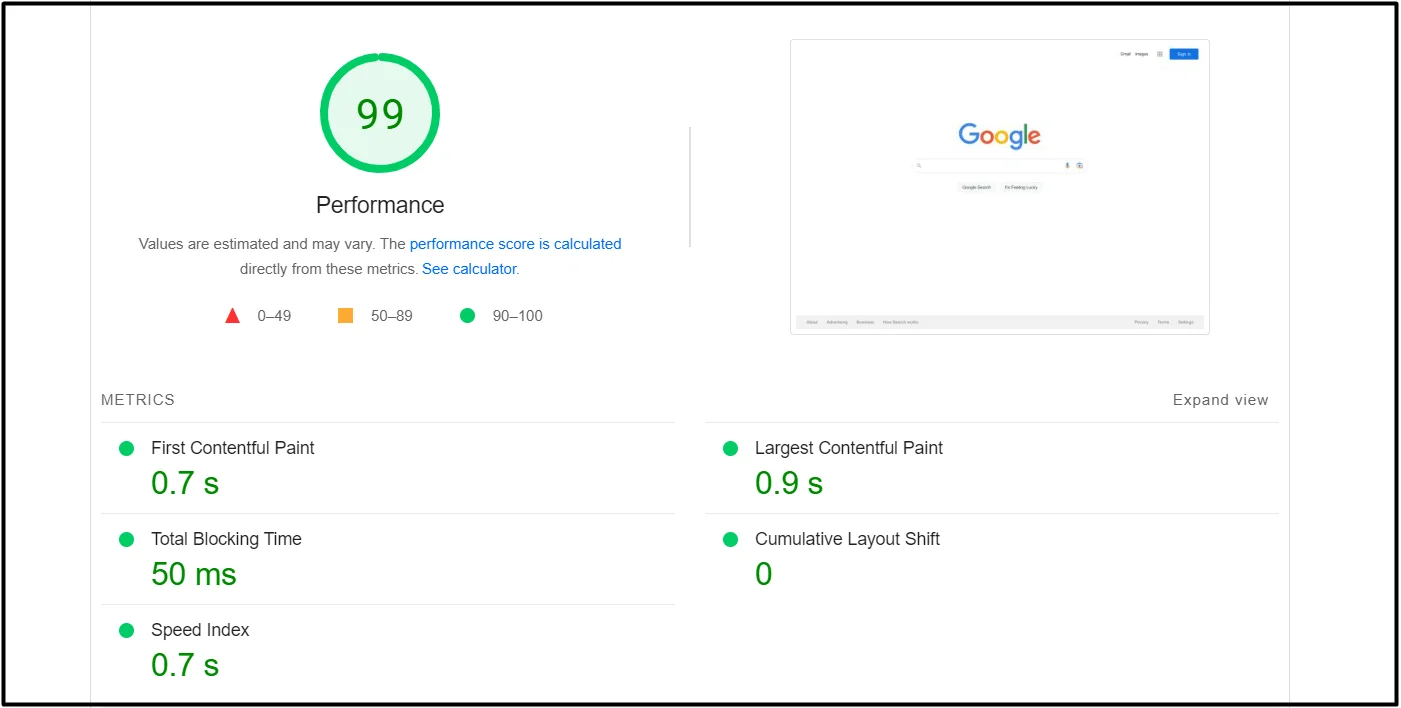
Google PageSpeed Insights is a free tool from Google that analyzes your website speed and provides suggestions on how to improve it. The tool analyzes both desktop and mobile versions of your website separately and provides a score out of 100 for each of them.
2. GTmetrix

GTmetrix is another popular tool that analyzes website speed. It provides a detailed report on various aspects of website speed, including page load time, page size, and the number of requests made.
3. Pingdom
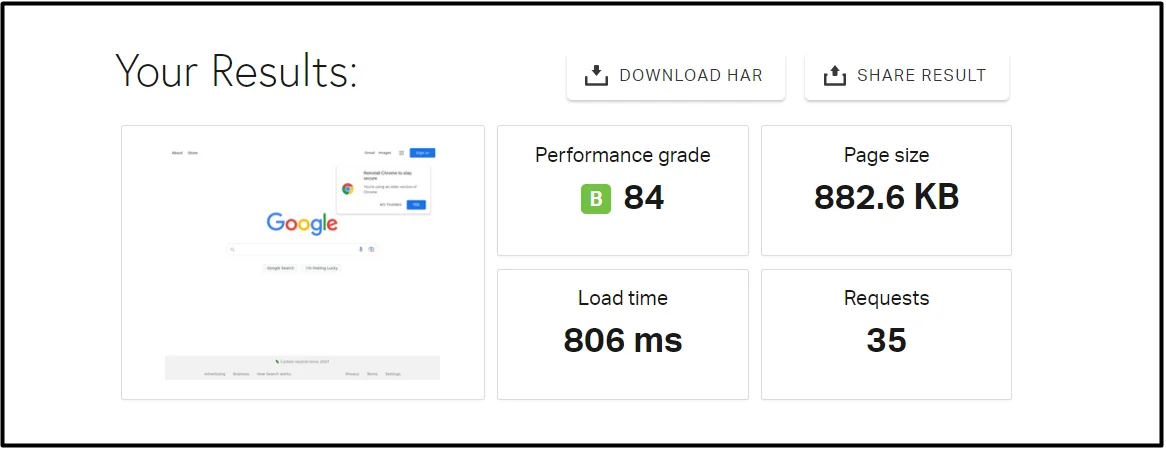
Pingdom is a tool that provides a detailed report on website speed, including page load time, page size, and the number of requests made. It also provides a waterfall diagram that shows the loading time of each element on the page.
4. WebPageTest
This tool provides a detailed analysis of your website’s speed and performance. It measures the load time of your website, identifies performance bottlenecks, and provides suggestions on how to optimize your website for faster loading times. It also provides a waterfall graph that shows how your website loads and identifies any performance issues.
2.3 Factors For Interpreting The Results For Website Speed
Now that you know the tools to analyze website speed, the next step is to interpret the results. Here are some of the key things to look for when analyzing the results:
1. Page Load Time
Page load time is the time taken by your website to load completely. The faster your website loads, the better. Ideally, your website should load within 2-3 seconds.
2. Page Size
Page size is the total size of your website, including text, images, videos, and other elements. The smaller the page size, the faster your website will load
3. Number of Requests
The number of requests made by your website to the server also affects the loading time. The more requests are made, the longer it takes for the website to load.
Now that you know everything about website speed, it’s time to understand the various aspects that affect website speed and how to improve them in order to boost your website loading times.
2.4 Strategies To Optimize Website Speed For Wix Platforms
Website loading speed is crucial for online success, and optimizing website speed for Wix platforms can significantly benefit your business. Strategies to improve website speed on Wix include optimizing images and videos, minimizing HTTP requests, caching, and compressing files. Today, we will be discussing each and every possible Wix speed optimization strategy in detail to understand the concept of website speed better.
3. How Images & Videos Affect Website Speed
Images and videos are an essential part of any website. They can help to enhance the user experience, convey information, and make your website more visually appealing.
However, if not optimized properly, they can also have a negative impact on your website speed. Slow-loading websites can lead to frustrated users who are more likely to leave your site before even exploring it. This is why it’s important to optimize your images and videos to ensure that they load as quickly as possible.
3.1 Tips for Optimizing Images and Videos on Wix Websites
Fortunately, there are a number of tips and techniques you can use to optimize your images and videos and improve your site’s speed and performance. Here are a few best practices to keep in mind:
1. Use the Right File Formats: As we mentioned earlier, the file format you use for your images and videos can have a big impact on your site’s speed. Whenever possible, try to use compressed formats like JPEG or MP4 to keep file sizes small.
2. Compress Your Files: Even if you’re using the right file format, your images, and videos may still be too large for optimal website performance. Use a compression tool like TinyPNG or Handbrake to reduce file sizes without sacrificing quality.
3. Resize Your Images: Large images can take a long time to load, even if they’re compressed. Use an image editing tool like Photoshop or Canva to resize your images to the exact dimensions you need for your site.
4. Use Lazy Loading: Lazy loading is a technique that delays the loading of non-critical images and videos until the user scrolls to that part of the page. This can help improve your site’s initial load time and make it feel faster overall.
5. Optimize Your Videos: Videos can be particularly problematic when it comes to website speed. Use a tool like Handbrake to compress your videos, and consider using a video hosting service like Vimeo or YouTube to offload some of the bandwidth and storage requirements from your site.
4. Minimizing HTTP Requests To Reduce Wix Website Speed
HTTP requests are an essential part of website communication. Every time a user visits a website, their browser sends HTTP requests to the server to retrieve specific resources like images, CSS, JavaScript, and other content. While these requests are necessary for proper website functionality, they can affect page load times, leading to a negative user experience. By minimizing HTTP requests, you can improve website speed and provide a better user experience. Additionally, a faster website can lead to better search engine rankings and increased conversions.
4.1 How To minimize HTTP Requests on Wix Websites:
1. Combine CSS and JavaScript files
Combining multiple CSS and JavaScript files into a single file can reduce the number of HTTP requests. Wix allows users to combine CSS and JavaScript files using the built-in developer tools. This feature can be found under the “Advanced” tab in the editor.
2. Use sprites for images
Sprites are images that contain multiple graphics, and they can be used to reduce the number of HTTP requests. Instead of loading multiple images, a sprite sheet can be loaded, and the individual images can be displayed using CSS. Wix supports sprite sheets, and users can create and use them with the built-in developer tools.
4. Use caching
Caching can reduce the number of HTTP requests by storing resources on the user’s device. Wix automatically caches static resources like CSS and JavaScript files, but users can also use browser caching to store resources like images and other content. This feature can be enabled using the built-in developer tools.
By reducing the number of HTTP requests, the website’s speed can be significantly increased, resulting in a better user experience. Minimizing HTTP requests involves combining multiple CSS and JavaScript files into one, using image sprites, and reducing the number of third-party scripts. A faster website not only enhances user experience but also improves search engine rankings, as Google considers website speed as one of its ranking factors. Therefore, by minimizing HTTP requests, Wix website owners can reap the benefits of a faster website
5. Enabling Browser Caching For Improving Website Speed For Wix Platforms
Browser caching is the process of storing a copy of website files locally on a user’s device. When a user visits a website, their browser will check to see if it has a cached copy of the website files. If it does, the browser will use this cached copy instead of downloading the files from the server. This can significantly reduce the time it takes for a website to load.
5.1 How Does Browser Caching Affect Website Speed?
Enabling browser caching can have a significant impact on website speed. When a user visits a website for the first time, their browser must download all of the website’s files from the server. This includes HTML, CSS, JavaScript, images, videos, and other media files. This process can take several seconds, depending on the size of the website and the user’s internet connection speed.
However, if the website has browser caching enabled, the user’s browser will only need to download the files that have changed since the last time they visited the website. This means that subsequent visits to the website will be much faster, as the browser will use the cached copies of the website files instead of downloading them from the server again.
6. Choosing the Right Wix Apps and Widgets
When it comes to building a website on Wix, there are countless apps and widgets available to enhance its functionality. However, it’s important to choose the right ones to ensure that your website remains fast and responsive. The impact of apps and widgets on your website’s speed is significant. The more apps and widgets you add, the more HTTP requests your website needs to make, increasing its load time. This can result in a frustrating user experience, as users are more likely to abandon a slow-loading website. Moreover, a slow website can negatively impact your search engine rankings, as site speed is one of the factors that search engines consider when ranking websites.
6.1 Tips To Choose The Right Apps & Widgets For Wix
To choose the right apps and widgets for your Wix website, consider the following tips:
1. Determine the purpose of your website:
Before adding any app or widget, determine the purpose of your website. What do you want to achieve? What are your goals? This will help you choose the right apps and widgets that align with your website’s objectives.
2. Evaluate the app’s or widget’s impact on your website’s speed:
Consider the impact of each app and widget on your website’s speed. Choose ones that do not compromise your website’s performance.
3. Choose apps and widgets that align with your website’s design:
Choose apps and widgets that align with your website’s design. They should complement your website’s aesthetic and not look out of place.
4. Check the app’s or widget’s reviews:
Check the app’s or widget’s reviews to see what other users are saying about it. Choose ones that have positive reviews and a good reputation.
Choosing the right apps and widgets for Wix websites can have a significant impact on the success of your website. With over 300 apps available, Wix offers a variety of tools to help you improve your website’s functionality and user experience.
7. Utilizing Content Delivery Networks (CDNs)
A CDN is a network of servers located in different geographic locations across the world. The purpose of a CDN is to deliver web content (images, videos, scripts, etc.) to users from a server that is closest to them. When a website is hosted on a single server, users from different parts of the world have to request content from that server, which can lead to slow loading times. CDNs solve this problem by caching the website content on multiple servers across the world, which reduces the distance the content has to travel to reach the user.
7.1 How can CDNs improve website speed?
CDNs can improve website speed in several ways. First, by caching website content on multiple servers across the world, CDNs reduce the distance the content has to travel to reach the user, which results in faster loading times. Second, CDNs can also reduce the load on the website’s origin server by serving the cached content from their own servers. This can lead to better website performance and uptime. Finally, CDNs can also protect websites from DDoS attacks by distributing the traffic across multiple servers, which makes it harder for attackers to overload a single server.
Unlock Lightning-Fast WIx Store & Sales: Optimize Today!
Fasten up Wix Store8. Implementing Responsive Design For Wix Website Speed
Responsive design is a web design approach that aims to create websites that can adapt to different screen sizes and devices. With responsive design, the website layout and content adjust automatically to fit the screen size of the device being used. Responsive design ensures that the website is easily viewable and navigable on all devices, whether it’s a desktop computer, laptop, tablet, or smartphone.
8.1 How Does Responsive Design Improve Website Speed?
Responsive design can improve website speed in a few ways. First, it reduces the amount of data that needs to be downloaded by users. When a website is not optimized for mobile devices, it may load the full desktop version of the website, which can take longer to load on mobile devices. With responsive design, only the necessary content is loaded, which can significantly reduce load times and improve website speed.
Second, responsive design can improve website speed by reducing the number of HTTP requests. When a user accesses a website, the website makes requests to the server to load various elements, such as images, CSS files, and JavaScript files. With responsive design, the website can reduce the number of requests by loading only the necessary elements for the device being used.
8.2 Tips for Implementing Responsive Design on Wix Websites
Wix is a popular website builder that offers a range of features and tools for creating professional-looking websites. Here are some tips on how to implement responsive design on Wix websites:
1. Choose a Responsive Template: Wix offers a range of responsive templates that are designed to adapt to different screen sizes and devices. When choosing a template, make sure to select one that is responsive.
2. Adjust the Layout: Once you have selected a responsive template, you can adjust the layout of your website to ensure that it looks good on all devices. Use Wix’s drag-and-drop editor to move elements around and adjust the size and position of images and text.
3. Test Your Website: Once you have designed your website, be sure to test it on different devices to ensure that it looks good and functions properly. Use tools such as Google’s Mobile-Friendly Test to check if your website is optimized for mobile devices.
Implementing responsive design can have a significant impact on website speed, and can help to improve user experience and drive more traffic to your site.
9. The Importance of Optimizing Code and Plugins
As a website owner, it’s important to understand how code and plugins can affect website speed and how you can optimize them for better performance. Code can have a significant impact on website speed. Bloated, poorly written code can slow down your website, making it sluggish and unresponsive. This can lead to a poor user experience and ultimately, lower engagement and conversions.
Plugins can also be a culprit when it comes to slow website speed. While plugins can add great functionality to your website, using too many can cause your website to slow down significantly. This is because each plugin adds additional code, which can lead to a slower loading time
9.1 Tips For Optimizing Codes & Plugins On Wix Websites
1. Use a lightweight Wix template
One of the easiest ways to optimize your website’s code is to use a lightweight Wix template. Wix offers a variety of templates that are designed to be fast and lightweight. These templates are optimized for speed and are a great starting point for creating a fast website.
2. Minimize your code
Another way to optimize your website’s code is to minimize it. This means removing any unnecessary code and compressing your code to make it smaller and faster to load. Wix has a built-in code minimizer that you can use to automatically compress your code.
4. Use optimized plugins
When it comes to plugins, it’s important to choose ones that are optimized for speed and performance. Check the reviews and ratings of plugins before installing them on your website, and make sure they are regularly updated by the developer.
5. Limit the number of plugins
Finally, it’s important to limit the number of plugins you have installed on your website. The more plugins you have, the slower your website will load. Only install plugins that are essential to your website’s functionality and remove any that are no longer needed.
10. Testing Website Speed and Performance
Having a website that loads quickly and performs well is crucial for any business. Slow website speed and poor performance not only create a negative user experience but can also impact your search engine rankings.
10.1 Why Is It Necessary To Test Website Speed and Performance
Website speed and performance have a direct impact on user experience. If your website takes too long to load, visitors are likely to leave and look for a faster alternative. Research has shown that users are more likely to abandon a website if it takes more than three seconds to load. Slow website speed can also negatively impact your search engine rankings. Search engines like Google prioritize fast-loading websites, and slow websites may be penalized in search results.
By testing your website speed and performance, you can identify any issues that may be slowing down your website and take steps to improve it. This can help improve user experience, increase search engine rankings, and ultimately, boost performance and revenue.
11. Mobile Optimization For Wix Websites
This shift in browsing habits has made it crucial for website owners to focus on mobile optimization. It’s not just about making your website look good on a phone or tablet—it’s about ensuring that your mobile visitors have a seamless experience that keeps them engaged and coming back for more. If you’re using Wix to build your website, optimizing for mobile devices is easier than you might think.
11.1 Tips for Optimizing Wix Websites for Mobile Devices
1. Use a Mobile-Friendly Template
Wix offers a wide range of templates, many of which are designed specifically for mobile devices. When choosing a template for your website, be sure to select one that is mobile-friendly. This will ensure that your website looks great on all devices, including smartphones and tablets.
2. Simplify Navigation
When it comes to mobile optimization, simplicity is key. You want to make it as easy as possible for users to navigate your website. To achieve this, simplify your navigation menu by only including the most essential pages. You can also use drop-down menus to further simplify navigation.
3. Optimize Images
Images are an important aspect of website design, but they can also slow down your website’s load time, which can be a problem for mobile users. To optimize your images for mobile devices, use the Wix image editor to resize and compress images. You can also use the lazy load feature, which only loads images when they are needed.
4. Use White Space
White space refers to the empty space between elements on your website. Using white space can make your website look less cluttered and more visually appealing. It’s especially important for mobile devices, where screen space is limited.
Optimizing your Wix website for mobile devices is an essential step in today’s mobile-first world. If your website is optimized for mobile devices, users will have a better experience, which can lead to increased engagement and conversions.
11.2 Why is Monitoring Website Speed and Performance Important?
There are several reasons why monitoring website speed and performance is important for your website’s success. Firstly, website speed and performance can affect your search engine rankings. Search engines like Google use website speed as a ranking factor. If your website is slow, it can negatively affect your rankings, making it harder for people to find you online.
Secondly, website speed and performance can affect your user experience. Slow-loading pages can increase bounce rates and reduce the amount of time visitors spend on your site. This can ultimately lead to lost sales and revenue.
Lastly, monitoring website speed and performance can help you identify issues and make improvements. By regularly monitoring your site’s performance, you can identify areas that need improvement and make changes to improve the overall user experience.
12. Conclusion:
In conclusion, optimizing your Wix website speed is crucial to the success of your online business. A faster website not only improves user experience but also boosts your search engine rankings and increases conversions. By implementing the tips and strategies discussed in this guide, you can significantly improve your website’s loading time and overall performance. Remember, a fast website is a competitive advantage in today’s digital landscape, so don’t hesitate to take action and optimize your Wix website speed today!
13. How Website Speedy Can You In Wix Speed Optimization?
Looking to boost the performance of your Wix website? Website Speedy is the perfect solution for you! This powerful SaaS-based website optimization tool comes packed with various features that can help you improve the loading times of your website. There are three pricing plans available for customers. What sets Website Speedy apart from other website optimization tools is its ability to reduce your Wix website loading times instantly. With Website Speedy, you can say goodbye to slow-loading pages and hello to happier visitors who will keep coming back for more!
Eliminates Render Blocking

“Render blocking” is a term used to describe the delay in loading web page content caused by resources that need to be loaded before the page can be displayed. Our website’s speedy tool is designed to address these render-blocking issues, allowing users to improve their website’s loading speed and achieve higher search engine rankings.
Fixes Core Web Vitals

There are several impacts of core web vitals on SEO. Our tool expertly identifies and fixes core web vital metrics that impact your site’s performance. By optimizing these core web vitals, your website can achieve its maximum potential, ensuring seamless user experiences. Trust us to optimize your website’s core web vitals and take your online presence to the next leve
Lazy Loading of Images
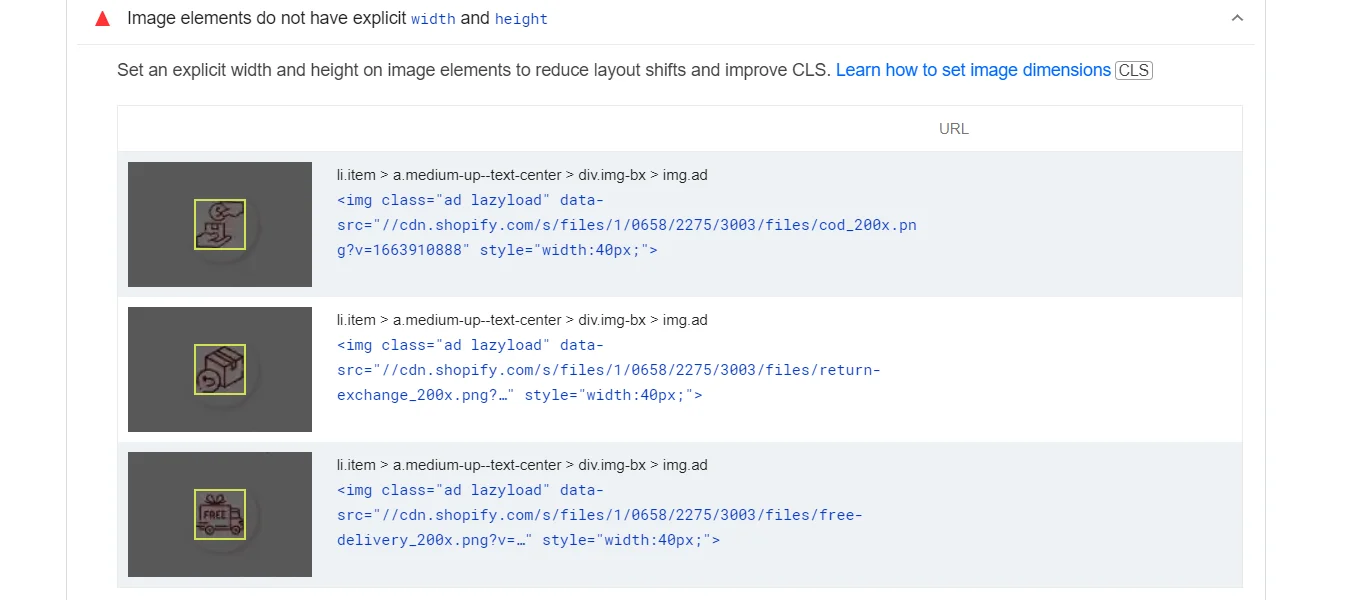
Our innovative tool uses the latest lazy loading technique to improve website performance and loading time. Website Speedy tool reduces initial load time, thus improving overall user experience and keeping visitors engaged.
Automated Monitoring of Website Speed
With Website Speedy, you gain access to an automated monitoring system that constantly tracks the speed of your website. This feature allows you to stay on top of the performance of your website over time and make necessary adjustments. With just a few clicks, you can ensure that your website is always optimized for speed.
May 9, 2023
Leave a Comment













































